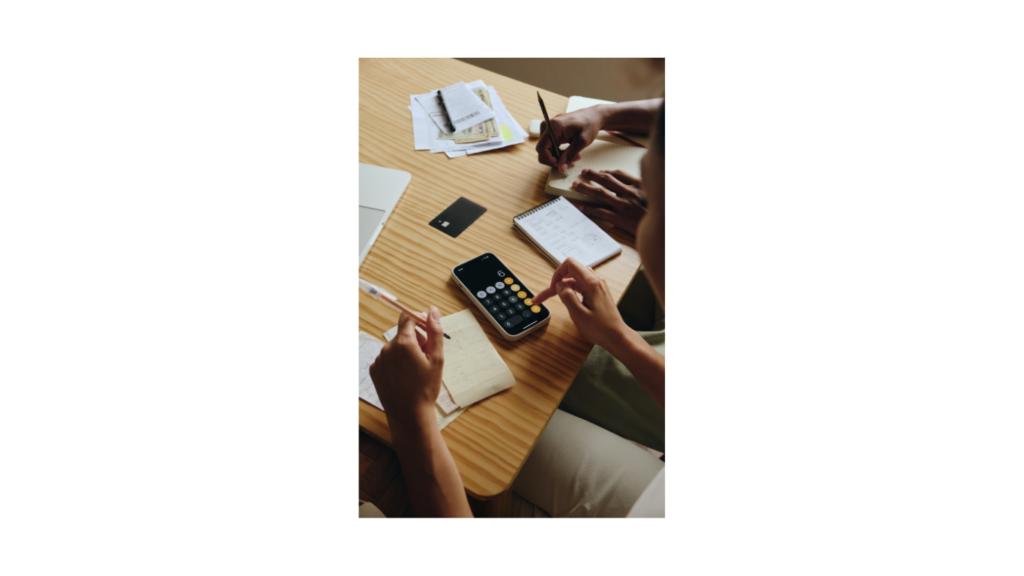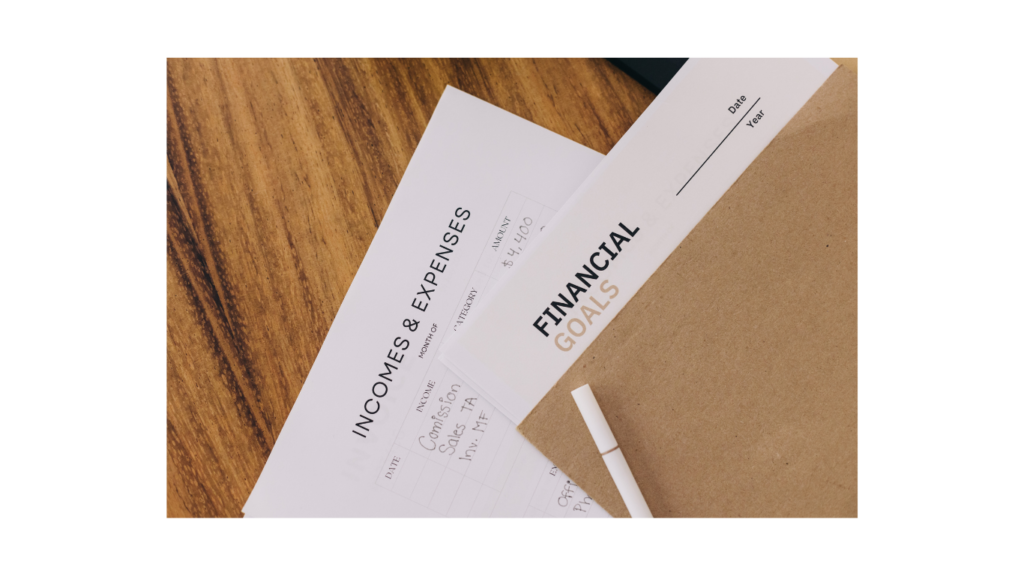This post may contain affiliate links. This means that if you click on one of my links and make a purchase, I receive a commission at no extra cost to you. See the full affiliate disclosure here.

Your Financial Takeover Starts Here
I used to love the idea of creating budgets. The fancy kinds of budgets with pretty color-coded pie charts, cool graphs, and all the data consisting of every purchase you ever made.
The problem was that I never maintained the habit of budgeting because inputting all of my monthly purchases into a spreadsheet was admittedly daunting.
I believed so much in needing to have a detailed budget to begin learning to manage your finances. I was headstrong in thinking this was a necessary step.
Through my experience coaching some of my family members on their finances, I decided there had to be another way. I developed budgets for a few of them. I was so proud of the budgets I created and I thought they were simple enough to follow and easy to access and input data. I was sure this would change their lives.
However, after following up with them, not one of them utilized the budget. They only looked at it once, appreciated it, and told me how great it looked.
But compliments did nothing for me if my family members were not taking advantage of using the budget to benefit their financial state.
Ultimately, I knew there had to be another way.
The Goal-Focused Budget to Get You on the Road to Financial Independence
The Goal-Focused Budget I now follow is truly simpler than the rest. Better yet, it shifts the focus FROM tracking every penny you spend TO reaching specific financial goals in a realistic time. All you need is to KNOW YOUR NUMBERS.
Once I started this budgeting method, I found I achieved my goals! I could not believe that simply shifting my focus, and simplifying my budget took me and my husband from stagnating and barely making increases in savings to reaching big-money goals.
The Goal Focused Budget can be a stepping stone to a more complex budgeting method or it can be all you need year after year.
For a beginner, this is especially ideal, particularly if you are someone who keeps hitting the wall trying to start on this financial journey of yours.

Your Easy Way to Budget Your Money to Reach Financial Freedom and Retire Early
Here are the Steps to start your Goal Focused Budget and Know Your Numbers:
(This could be a rough draft on a blank sheet of paper, use whole numbers)
Step 1:
Grab a sheet of paper or use your phone and write out your NET INCOME at the top of the page.
Step 2:
-Now write out your FINANCIAL GOALS for the year.
-Include a numerical value for each goal.
-You will have to go back and adjust the numbers once you complete your budget sheet, but at least write out what it is you are hoping for while being realistic of course.
Examples:
How much would you like to have in your savings account by year end? $8,000/12 months =$667/month
How much do you want in your retirement account? $5,000/12 mo = $417/mo
What about your non-retirement investment accounts? $10,000/12 mo = $834/mo
Do you have any travel plans this year, what is the approximate cost? $3000/12 mo = $250/mo
Looking to buy a home or a car in the next few years?
Include any other financial plans you are working towards here.

So far in this example, you’re total savings goal for the year is $26,000 with a $2,168 savings goal for the month. This is the PAY YOURSELF FIRST dollar amount. That means when you receive your paycheck, this dollar amount calculated based on your goals (in this example: $2,168), is what comes out of your paycheck before directing it elsewhere.
Again, this is just an example of financial goals to achieve in a year. These numbers vary based on your income and your goals.
This part of your budget is significant to pay attention to because here is where you write out your desires and anticipated needs. These are the most important values for you to figure out because who would not want a chance to reach their goals?
These goals are meant to strive for security, comfort, freedom, and control. That is why this is Step 2 rather than the last step. This comes before knowing your other expenses.
It does not make sense to me to calculate your expenses first and then leave the remaining income towards the thing that can provide you with financial freedom. You need to learn to PAY YOURSELF FIRST.
When you prioritize the goals over the nonessential expenses every day, you begin to learn to value your money and more importantly your time.
I tend to mention and will continue to mention the importance of enjoying the present time. We cannot predict the future so live your life. But that does not mean you can’t do so responsibly.
No, we cannot predict the future which is even more reason why we should still plan for it.
You should only consider restricting yourself, and maybe only temporarily if you require more discipline with managing your money. At least until you get your finances more streamlined. Have confidence in yourself that you can go from being wildly reckless to experiencing a financial takeover by practicing prudence.
Almost there! Soon you’ll be ready to Budget Your Money with Your Goals as the Focus

Step 3:
List all your EXPENSES.
ESSENTIAL costs such as your rent/mortgage, your car payment, insurance, groceries, gas for your vehicle, etc. These are the items to help keep a roof over your head and food in your belly. Add the annual expenses that you forget about because it only happens once a year. Divide that cost by 12 months and add it to your calculation.
List out the average monthly spending for NON-ESSENTIAL items. Calculate the total.
Do this for the past 2-3 months and calculate an approximate average of what your spending is in a month.
Are you happy with this amount? Do you want to reduce your spending?
My husband and I learned to reduce our spending and dedicate more of our income towards investing, vacations, and outings with loved ones. Read ‘Our 5 Habits that Save Us >60% of our Income’, here to see how we did it.
Step 4:
You now KNOW YOUR NUMBERS.
You have listed your NET INCOME, you have your FINANCIAL GOALS in place, you’ve figured out the PAY YOURSELF FIRST number, and now you know what your EXPENSES total.
Here is where you make adjustments. As I mentioned, it’s worth it to evaluate your expenses and reduce your bill payments. This is where you start making decisions on which miscellaneous spending you’d rather keep over others. Consider your spending, is it worth it to continue spending without being mindful, at the expense of your financial independence?
Once you make those adjustments and shave off costs wherever possible, you can adjust the PAY YOURSELF FIRST dollar amount to ensure your bills are met and paid on time.

Step 5:
The constant goal throughout the year is to increase your savings rate to reach your financial goals sooner.
I recommend revisiting this Goal Focused Budget every quarter rather than crunching numbers daily or monthly into a complex budget sheet. You’ll want to approach the quarter mark with intentions to increase the PAY YOURSELF FIRST number.
You do this by being mindful of your spending habits throughout that time. Are there any more ways to reduce your bills?
When it comes time to revisit your budget, make adjustments to your numbers. Any extra savings you’ve gained can be redirected towards one or all of your goals. Look at the progress you’ve made. Look at how dedicated effort to your financial goals and how it’s starting to pay off.
Seeing progress will be your driving force so use this approach and your future self will thank you.
You did it! You created an easy, no-frills budget based on your goals!
You now KNOW YOUR NUMBERS. You know how much money is coming in, how much is going towards reaching your goals, and how much goes towards bills and miscellaneous expenses.
You don’t even need to write it all down every day or every month anymore. You just need to know what you’re working with now, be mindful of money decisions, and revisit the goal-focused budget every quarter to make any necessary adjustments.
No more being overwhelmed or intimidated by budgeting. No more letting this stop you in your tracks to financial freedom. You got this and there’s nothing you can’t handle.
I will help you learn the tools you need to make better financial decisions, improve your money-management skills, and get you on the path to retiring early and enjoying financial independence.
I care to make this a fun journey rather than a restrictive one but that takes being mindful, practical, and intentional with your financial habits.
Sign up to be part of the email list and continue to get insightful personal finance tips.
Until next time,
The Financial Takeover


Pingback: Top 11 Habits of People Who Always have Money – The Financial Takeover